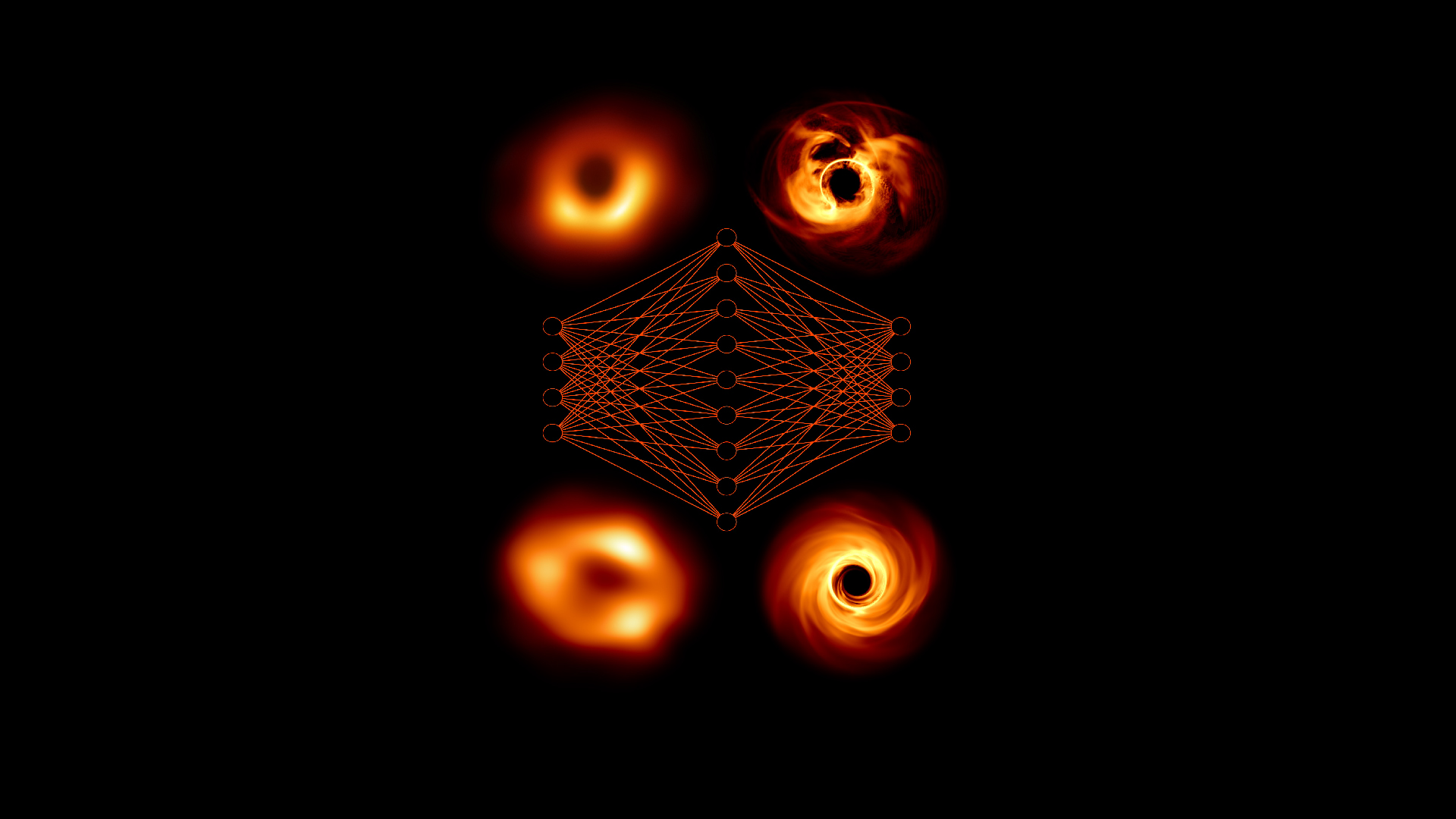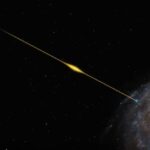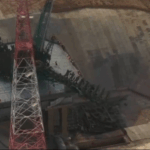Now Reading: A spinning universe could crack the mysteries of dark energy and our place in the multiverse
-
01
A spinning universe could crack the mysteries of dark energy and our place in the multiverse
A spinning universe could crack the mysteries of dark energy and our place in the multiverse
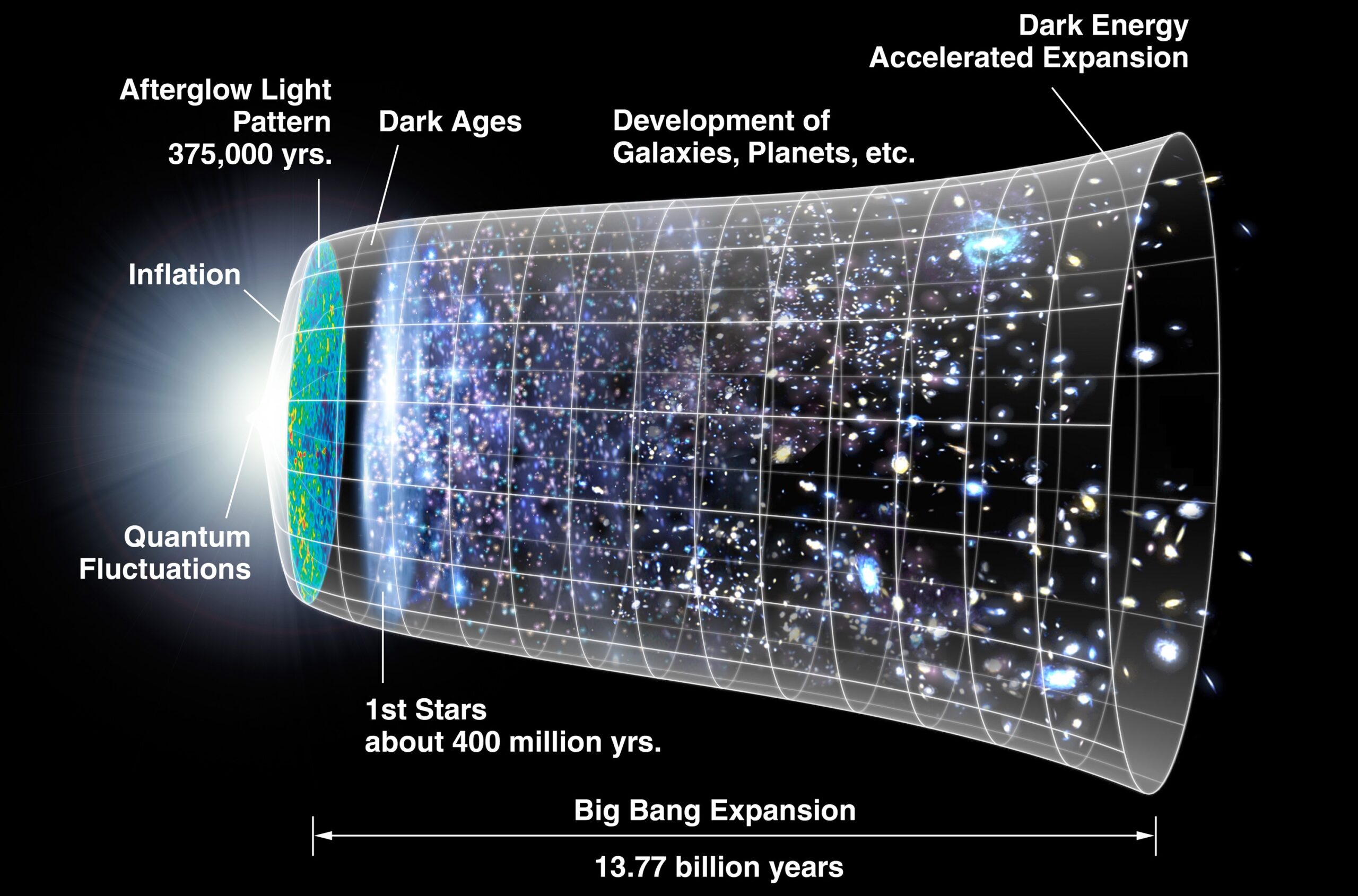
What is dark energy? Why does dark energy seem to be weakening? Is our universe part of a larger multiverse? What lies beyond the boundary of a black hole?
The universe seems to be rotating, and if that is the case, then this could have major ramifications for some of the biggest questions in science, including those above. That’s according to Polish theoretical physicist Nikodem Poplawski of the University of New Haven, who is well-known for his theory that black holes act as doorways to other universes.
“Dark energy is one of the most intriguing mysteries of the universe. Many researchers have tried to explain it by modifying equations of general relativity or suggesting the existence of new fields that could accelerate the universe’s expansion,” Poplawski told Space.com. “It would be amazing if a simple rotation of the universe was the origin of dark energy, especially that it predicts its weakening.”
Evidence that the universe is rotating was recently delivered by the James Webb Space Telescope (JWST), which found that two-thirds of galaxies are rotating in the same direction. This suggests a lack of randomness and a preferred direction for cosmic rotation.
Additionally, Poplawski pointed out that other astronomical data seem to show that the angle between the most likely axis of the spinning galaxies and the axis of the bulk flow of nearby galaxy clusters is 98 degrees, meaning they are nearly perpendicular in relation to each other. That is something that is in accordance with the hypothesis that the universe is rotating.
A spinning universe isn’t the only universe
To understand why a rotating universe implies more than one universe, Poplawski refers to “frames of reference.” These are sets of coordinate systems that are integral to physics, which allow motion and rest to be measured.
Imagine two scientists, Terra and Stella. Each is in their own frame of reference, but Terra on Earth, Stella in a spacecraft traveling past our planet. Terra sees Stella’s frame of reference (the spacecraft) moving in relation to her own (the Earth), which is at rest. Stella, meanwhile, sees her frame of reference at rest while it is Terra’s frame of reference in motion as the Earth races away.
Poplawski pointed out that if the universe is rotating, then its frame of reference is rotating, and that only makes sense if it is rotating in relation to at least one other frame of reference.
“If the universe is rotating, it must rotate relative to some frame of reference corresponding to something bigger,” he continued. “Therefore, the universe is not the only one; it is a part of a multiverse.”
For Poplawski, the simplest and most natural explanation of the origin of the rotation of the universe is black hole cosmology.
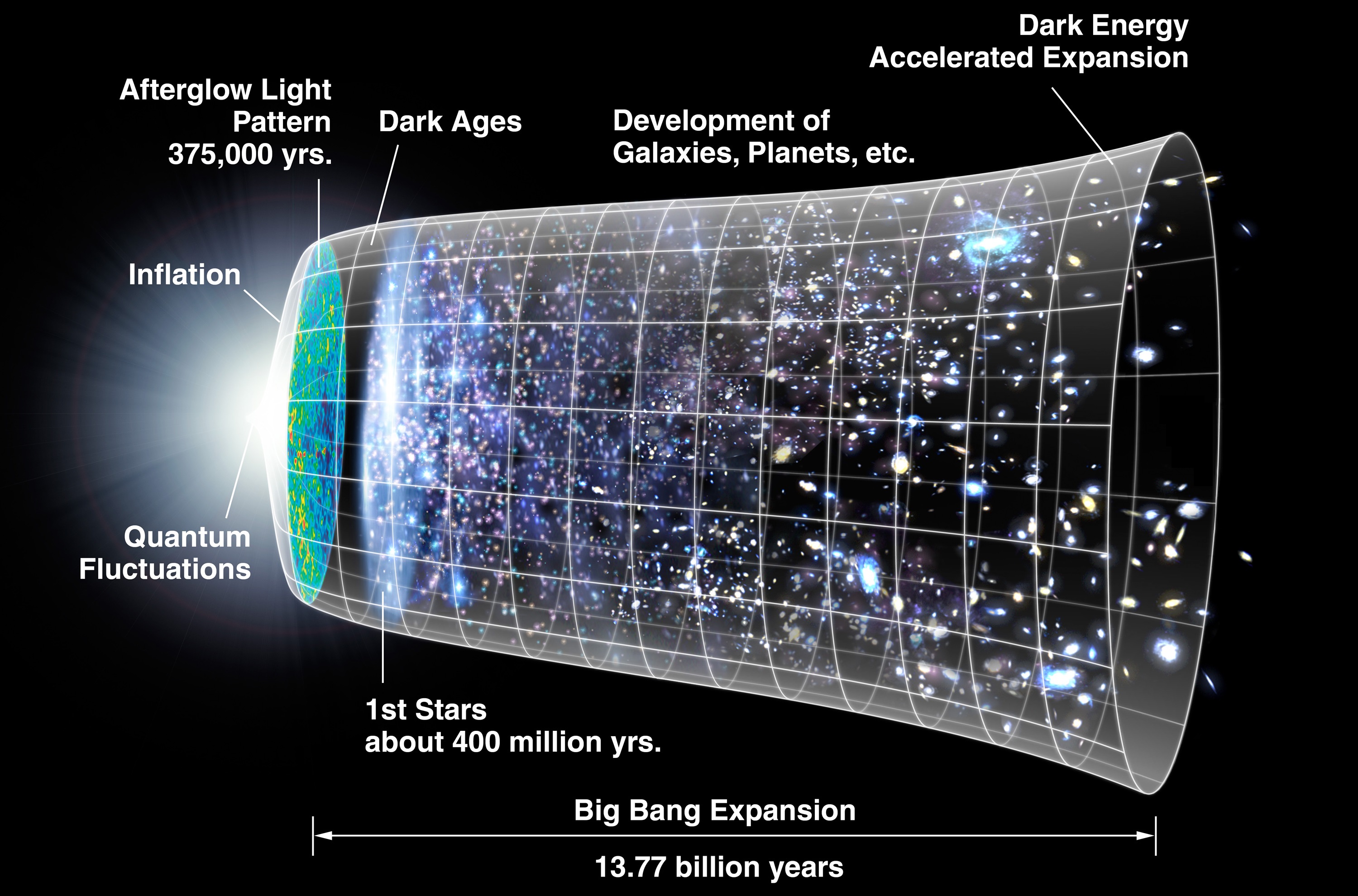
Black hole cosmology suggests that every black hole creates a new baby universe on the other side of its event horizon, the one-way light-trapping surface that defines the outer boundary of a black hole.
The theory replaces the central singularity at the heart of a black hole with “spacetime torsion” that gives rise to repulsive gravity that kick-starts the expansion of a new universe.
“Because all black holes form from rotating objects, such as rotating stars or in the centers of rotating galaxies, they rotate too,” Poplawski said. “The universe born in a rotating black hole inherits the axis of rotation of the black hole as its preferred axis.”
In other words, our universe may be spinning in a preferred direction because that is the way that the black hole it is sealed within is spinning.
“A black hole becomes an Einstein-Rosen bridge or a ‘wormhole‘ from the parent universe to the baby universe,” Poplawski explained. “Observers in the new universe would see the other side of the parent black hole as a primordial white hole.”

In lieu of discovering a primordial white hole in our universe leading to our parent black hole and progenitor universe, the strongest evidence of this black hole cosmology is a preferred direction or “rotational asymmetry” in our universe. That can be seen in rotational asymmetry in the galaxies.
“The motion of individual galaxies in that baby universe will be affected by the rotation of that universe,” Poplawski said. “The galaxies will tend to align their axes of rotation with the preferred axis of the rotation of the universe, resulting in the rotation asymmetry, which can be observed.”
That’s something astronomers are starting to see.
Of course, that means that every black hole in our universe is a doorway to another baby cosmos. These infant universes are protected from investigation by the event horizon of their parent black holes, which prevents any signal from being received from the interior of a black hole.
Likewise, a trip through this cosmic doorway would be impossible for a budding “multinaut” due to the immense gravity surrounding a black hole, which would give rise to tidal forces that would “spaghettify” such an intrepid explorer.
Even if such a multinaut were to survive the journey, just as nothing can escape a black hole, nothing can enter a white hole, meaning there would be no return or opportunity to file a report!
Even grimmer than this, there’s no guarantee that the laws of physics are the same in a baby universe as their parent universe, meaning an unpredictable fate and potentially a messy death for a hardy multinaut able to brave a black hole doorway.
Anyway, before we rush off to explore other universes, there are mysteries to be investigated right here in our own universe. At the forefront of these is the mysterious force of dark energy.
Dark energy puts scientists in a spin
Dark energy is a placeholder name given to whatever force is causing the universe to expand at an accelerating rate. Dark energy currently dominates the universe, accounting for 68% of the total cosmic matter-energy budget. This wasn’t always the way, though.
During the universe’s earliest epoch, it was dominated by the energy of the Big Bang, causing it to inflate. As the universe entered a matter-dominated epoch ruled by gravity, this inflation slowed to a near stop. This should have been it for the cosmos, but around 9 billion to 10 billion years after the Big Bang, the universe started to expand again, with this expansion accelerating, leading to the dark-energy dominated epoch.
To understand why this is such a worrying puzzle, imagine giving a child on a swing a single push, watching their motion come to a halt, and then, for no discernible reason, they start swinging again, and this motion gets faster and faster.
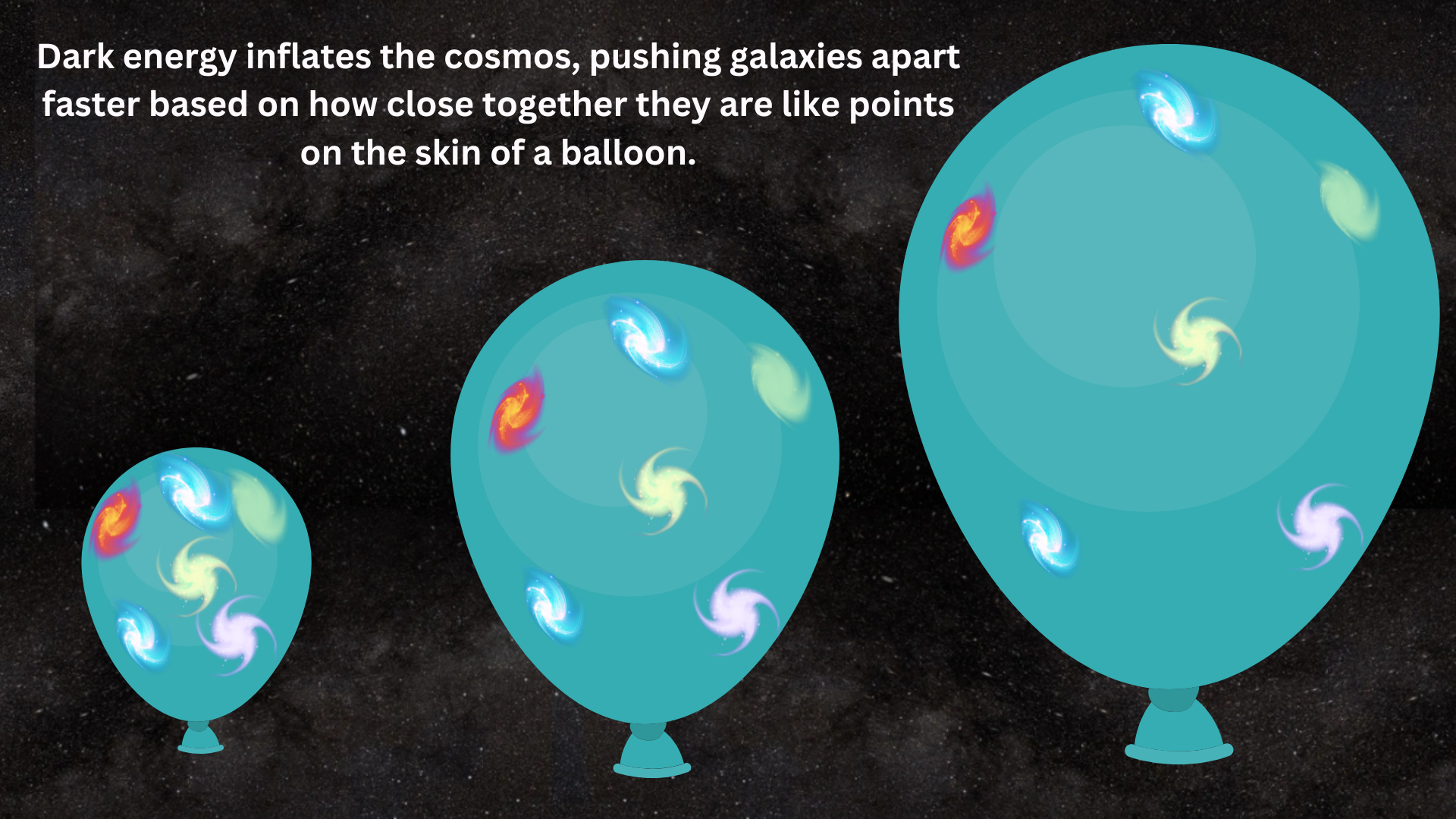
As if dark energy weren’t strange enough already, recent results from the Dark Energy Spectroscopic Instrument (DESI) have indicated that this mysterious force is weakening. This is something that seemingly defies the standard model of cosmology or the Lambda Cold Dark Matter (LCDM) model, which relies on dark energy (represented by the cosmological constant or Lambda) being constant.
However, Poplawski theorizes that a spinning universe can both account for dark energy and explain why it is weakening.
“Dark energy would emerge from the centrifugal force in the rotating universe on large scales,” the theoretical physicist explained. “If the universe were flat, the centrifugal force would act only in directions perpendicular to the preferred axis.”

However, in Poplawski’s black hole theory of cosmology, because the universe created by a black hole is closed, moving away in any direction would eventually lead to coming back from the opposite direction.
That would mean the centrifugal force arising from a spinning universe becomes a force acting in all directions away from the universe’s parent primordial white hole.
“The magnitude of this force is proportional to the square of the angular velocity of the universe and the distance from the white hole,” Poplawski said. “This relation takes the form of the force acting on a galaxy due to dark energy, which is proportional to the cosmological constant and the distance from the white hole. Therefore, the cosmological constant is proportional to the square of the angular velocity of the universe.”
But, how could this explain the DESI observations that seem to indicate that dark energy is getting weaker?
“Because the angular momentum of the universe is conserved, it decreases as the universe expands,” Poplawski said. “Consequently, the cosmological constant, which is the simplest explanation of dark energy, should also decrease with time. This result is consistent with recent observations by DESI.”
Related Stories:
To provide some further evidence of Poplawski’s concept, more data on the bulk flow of galaxy clusters and on the asymmetry of galaxy rotation axes are needed. This would help further confirm that our universe is rotating.
Additionally, more data regarding how dark energy depends on cosmic distances and the progression of time in our 13.7 billion-year-old cosmos could help validate whether the weakening of dark energy is related to the decreasing angular velocity of the universe.
“The next step to advance these ideas is to determine the equation describing how the cosmological constant, generated by the angular velocity of the universe, decreases with time, and to compare this theoretical prediction with the observed decrease of dark energy,” Poplawski concluded. “This research might involve searching for the metric describing an expanding and rotating universe.”
A pre-peer-reviewed version of Poplawski’s research appears on the paper repository site arXiv.
Stay Informed With the Latest & Most Important News
-
 012024 in Review: Highlights from NASA in Silicon Valley
012024 in Review: Highlights from NASA in Silicon Valley -
 02Panasonic Leica Summilux DG 15mm f/1.7 ASPH review
02Panasonic Leica Summilux DG 15mm f/1.7 ASPH review -
 03How New NASA, India Earth Satellite NISAR Will See Earth
03How New NASA, India Earth Satellite NISAR Will See Earth -
 04And Thus Begins A New Year For Life On Earth
04And Thus Begins A New Year For Life On Earth -
 05Astronomy Activation Ambassadors: A New Era
05Astronomy Activation Ambassadors: A New Era -
 06From Polymerization-Enabled Folding and Assembly to Chemical Evolution: Key Processes for Emergence of Functional Polymers in the Origin of Life
06From Polymerization-Enabled Folding and Assembly to Chemical Evolution: Key Processes for Emergence of Functional Polymers in the Origin of Life -
07SpaceX launch surge helps set new global launch record in 2024
















